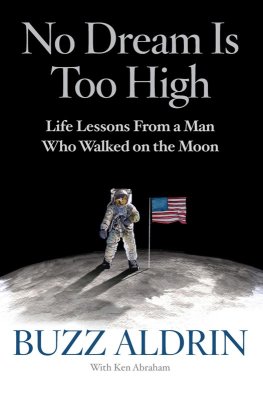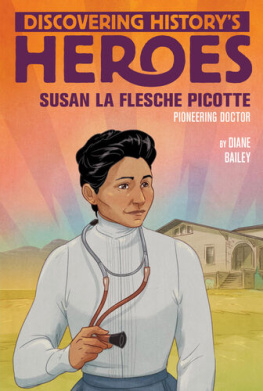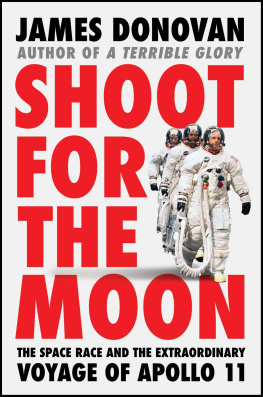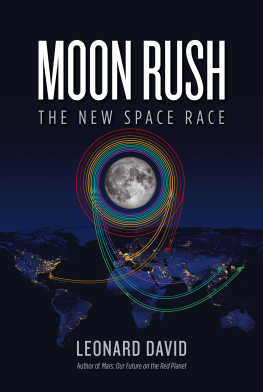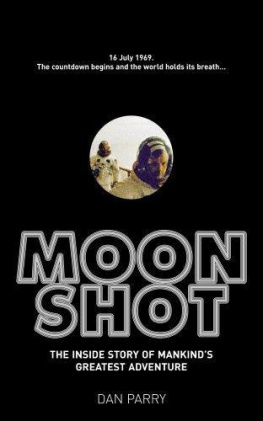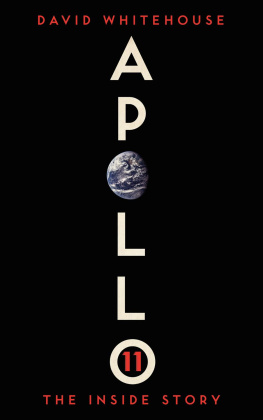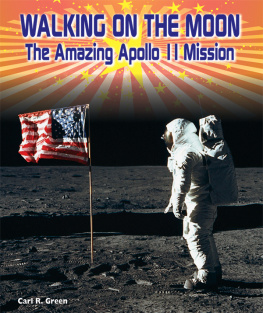MOON
SHOT
For my Dad, Steve Parry
1943-2008
This eBook is copyright material and must not be copied, reproduced, transferred, distributed, leased, licensed or publicly performed or used in any way except as specifically permitted in writing by the publishers, as allowed under the terms and conditions under which it was purchased or as strictly permitted by applicable copyright law. Any unauthorised distribution or use of this text may be a direct infringement of the author's and publisher's rights and those responsible may be liable in law accordingly.
ISBN 9781407027494
Version 1.0
www.randomhouse.co.uk
1 3 5 7 9 10 8 6 4 2
Published in 2009 by Ebury Press, an imprint of Ebury Publishing
A Random House Group Company
Copyright Dan Parry 2009
Dan Parry has asserted his right to be identified
as the author of this Work in accordance with the
Copyright, Designs and Patents Act 1988
This electronic book is sold subject to the condition that it shall not by way of trade or otherwise, be lent, resold, hired out, or otherwise circulated without the publisher's prior consent in any form other than that in which it is published and without a similar condition including this condition being imposed on the subsequent purchaser
The Random House Group Limited Reg. No. 954009
Addresses for companies within the Random House Groupcan be found at www.randomhouse.co.uk
A CIP catalogue record for this book
is available from the British Library
ISBN: 9781407027494
Version 1.0
Printed in the UK by CPI Mackays, Chatham, ME5 8TD
To buy books by your favourite authors and register for offers visitwww.rbooks.co.uk
All photographs featured in this book are courtesy of NASA
Acknowledgements
Many people kindly gave this book and the TV show it accompaniesmuch generous support and assistance. The factual dramaMoonshot is one of a number of TV shows produced byDangerous Films focusing on the history of NASA generally andApollo 11 particularly. Some were completed before theMoonshot project was conceived, but during their production Iwas enormously privileged to discuss NASA's work with BuzzAldrin, Neil Armstrong, Gene Cernan, Charlie Duke, Chris Kraft,Gene Kranz, Glynn Lunney, George Mueller and others.Humanity possesses the knowledge and experience to leave ourplanet at will thanks to the pioneering actions of men such asthese, and I remain in awe of their achievements. To those whoso patiently helped me with some of the more technical aspects ofthese achievements, I am grateful. I am particularly indebted tothe team behind the exemplary website the Lunar SurfaceJournal, among them David Harland, Frank O'Brien, DavidWoods and especially Ken MacTaggart.
Staff at the Johnson Space Center, the Marshall Space FlightCenter and other NASA sites have been enormously generous intheir assistance to all of us at Dangerous, as have experts at theSmithsonian Institution, particularly Dr Roger Launius. ChrisRiley's illuminating suggestions were as entertaining as they werevaluable, and I am also grateful to the enthusiastic assistance ofDoug Millard at the Science Museum. Thanks too to Ken Barlowand Jake Lingwood at Ebury, and especially to Richard Daleand Mike Kemp at Dangerous, whose kind support is greatlyappreciated.
Above all, I'd like to give heartfelt thanks to my gracious andloving wife Saira, who I'm sure on occasion felt she'd beenwhisked off to the Moon and stranded in lunar orbit. And toYasmin, I'd like to say that 'Ubba's boop' is finally finished.
PROLOGUE
What would the Moon be like?
While this question fascinated those back on Earth, for NeilArmstrong the Moon was playing no more than a supportingrole. Here was a chance for man to achieve something beyondcomparison. If it were successful, the Apollo 11 mission woulddemonstrate that humans, as a species, were capable of escapingfrom their planet and visiting somewhere a world away fromhome. It didn't matter much whether the Moon was made ofbrown rocks, grey dust or even green cheese. To Armstrong, allthat really counted was landing safely and then coming homeagain, without letting anyone down in the attempt to do either.
Standing in the lunar module, the most fragile manned spacecraftever built, Armstrong was flying at more than 3,000mph,five times faster than a passenger jet. There were no landing padson the Moon, no ground crew to guide him down; 50,000 feetbelow him lay nothing more than an uncharted area that waspockmarked by rocks and craters and which was believed to bea little less dangerous than other uncharted areas. If he were toreach his designated target site, Neil would have to graduallyreduce his speed to walking pace and then find a relatively benignarea to touch down before his fuel ran out. There was littlemargin for error. Landing too fast on a landscape strewn withboulders could damage the spacecraft and potentially end anyhope of returning home.
One way or the other, in the next 12 minutes it would be overand all the hand-wringing, the months of agonising expectationand the endless press questions could finally be laid to rest. Thenewspapers were fascinated by lunar landscapes. But while rocksand craters captured the media's attention, for a pilot they wereto be avoided. As far as Neil was concerned, Apollo 11 wasn'tabout boxes of stones. Exploring the surface was secondary tothe mission's prime objective. None of the early aviation pioneers,who had so inspired Neil as a boy, had regarded their greatesttriumph to be a stroll beside their aircraft. Armstrong, like theWrights, Earhart and Lindbergh before him, knew that nothingwas more significant about a test-flight than safely completing it.
Standing beside Neil was Buzz Aldrin, and together the twomen would have considered themselves to be flying horizontallyface down had they not been in weightlessness. They were alsotravelling backwards, feet first, using the engine as a brake toreduce their speed. The gleaming white surfaces of their crampedcabin were bathed in sunlight, yet somehow the aura of a brandnewspaceship was personalised by the grubby ways of people.Handwritten notes were stuck on the dull grey instrument panelsand here and there other personal items were secured by Velcroor held down by netting. Having taught himself to go to theMoon, man was bringing with him urine bags, food trays anddoodles in margins.
While Buzz monitored the instruments, Neil looked throughthe triangular window in front of him. In timing their journeyover the alien terrain below, he discovered with dismay that thecrater known as Maskelyne-W had arrived early. They were threeseconds ahead of themselves, and three seconds equated to threemiles, which would take them beyond the edge of the landingzone. They would be coming down in an area Neil knew to bestrewn with boulders, and in a spacecraft with walls so thin youcould poke a pencil through them. He knew they would be luckyto avoid any damage. Luck wasn't enough. He had the facility tooverride the computer and fly the spacecraft manually but thiscould only be done in the closing stages of the descent. For themoment he must follow the flight-plan.
At 40,000 feet, Armstrong rotated the lunar module by 180degrees so that he was no longer looking down at the Moon butstaring up into space. By repositioning the spacecraft, which wasoperating under the call-sign Eagle, Neil enabled the landingradar to get a clearer view of the surface. Now that they weredue to land long he needed as much reliable information as hecould get.
Then the yellow master alarm started to flash, a tone soundedin Neil's headset and the computer's yellow PROG light lit up.The computer would help diagnose the problem, allowingArmstrong and Aldrin to decide what action to take based onlessons learned during training. 'It's a 1202,' Neil told Houstonafter glancing at the computer display. It was a code neither henor Buzz had ever seen during training, so now they had twoproblems. The computer could be signalling an immediate needfor action, yet incapacitated by uncertainty they could do nothingbut wait for advice from home.


